- Introduction: Edgar Cayce – The Sleeping Prophet
- Edgar Cayce’s Early Life and Discovery of His Unique Abilities
- The Development and Struggles with Cayce’s Abilities
- Edgar Cayce’s Reading Abilities: Characteristics and Influence
- Accessing the Akashic Records: Cayce’s Unique Insight
- Edgar Cayce’s World War II Predictions
- Edgar Cayce’s Predictions on Scientific and Technological Advancements
- Pole Shift and Global Changes: Cayce’s Earth Transformation Prophecies
- Cayce’s Prophecies on Japan’s Future
- The Impact and Accuracy of Cayce’s Prophecies
- Controversies and Criticisms Surrounding Cayce’s Prophecies
- The Continuing Influence of Cayce’s Prophecies on Modern Society
- Conclusion: The Enduring Legacy of Edgar Cayce’s Teachings
Introduction: Edgar Cayce – The Sleeping Prophet
In the annals of modern mysticism, few names resonate as profoundly as Edgar Cayce. Known as the “Sleeping Prophet,” Cayce left an indelible mark on the 20th century with his remarkable psychic abilities and prophetic visions. Born in 1877 in Kentucky, Cayce’s journey from a humble farm boy to one of the most influential seers of his time is a testament to the extraordinary potential that lies dormant within the human psyche.

Cayce’s significance extends far beyond his era, touching upon various aspects of human existence – from health and spirituality to global events and the very nature of consciousness itself. His ability to enter a self-induced trance state and provide detailed information on subjects far beyond his waking knowledge captivated both the public and researchers alike. With over 14,000 documented readings covering an astonishing array of topics, Cayce’s work continues to intrigue and inspire people worldwide.
What sets Cayce apart from other psychics and prophets is not just the volume of his readings, but their remarkable accuracy and depth. His medical diagnoses, given while in a trance state, often proved more accurate than those of trained physicians of his time. His predictions about world events, including the two World Wars and the Great Depression, demonstrated an uncanny insight into the future.
Cayce’s teachings on spirituality and personal growth have had a lasting impact on New Age philosophy and alternative medicine. His concept of the Akashic Records – a cosmic repository of all knowledge and human experience – has become a cornerstone of many spiritual beliefs. His emphasis on the mind-body-spirit connection in health and healing was decades ahead of its time and continues to influence holistic health practices today.
As we delve deeper into the life and work of Edgar Cayce, we uncover a legacy that challenges our understanding of human potential and the nature of reality itself. His story is not just about prophecy and psychic abilities; it’s a testament to the power of compassion, the importance of personal growth, and the interconnectedness of all life. In exploring Cayce’s world, we embark on a journey that may well reshape our perception of what is possible in the realm of human consciousness.
Edgar Cayce’s Early Life and Discovery of His Unique Abilities
Edgar Cayce’s journey into the realm of the extraordinary began in the most ordinary of settings. Born on March 18, 1877, in Hopkinsville, Kentucky, Cayce was raised in a modest farming family. His parents, Leslie and Carrie Cayce, were devout Christians, and this religious upbringing would play a crucial role in shaping young Edgar’s worldview and later struggles with his unusual abilities.
From an early age, Cayce displayed signs of a unique sensitivity. He often spoke of seeing and conversing with his late grandfather’s spirit, an experience that, while frightening to him at first, would foreshadow his future abilities. His parents, though puzzled, were supportive and understanding, creating an environment where Cayce felt safe to explore his growing intuitive faculties.

One of the pivotal moments in Cayce’s childhood occurred when he was around seven years old. While reading the Bible – a book that would remain central to his life and work – Cayce had a profound spiritual experience. He described being visited by a radiant female figure who asked him what he wanted most in life. His response, “To be helpful to others, especially children,” would set the tone for his future work and mission.
As Cayce grew older, his unusual abilities began to manifest in more tangible ways. At school, he discovered he could sleep on his textbooks and absorb their contents, a talent that both amazed and concerned his teachers and parents. This ability to access information beyond his conscious knowledge would later evolve into his famous trance readings.
However, Cayce’s childhood was not without its challenges. His psychic sensitivities often made him feel different from his peers, and he struggled to reconcile his experiences with his religious upbringing. The young Cayce was torn between his desire to be “normal” and the undeniable reality of his extraordinary perceptions.
A turning point came in Cayce’s teenage years when he suffered a baseball injury that led to the loss of his voice. Conventional medical treatments proved ineffective, and itwas during this crisis that Cayce’s psychic abilities took a dramatic turn. In a desperate attempt to find a cure, a local hypnotist suggested that Cayce diagnose his own condition while in a trance state. To everyone’s astonishment, the entranced Cayce not only spoke clearly but also provided a detailed diagnosis and treatment plan for his condition. Following his own prescribed treatment, Cayce’s voice was restored, marking the beginning of his career as a medical clairvoyant.
This incident not only cured Cayce’s ailment but also opened the door to a new understanding of his abilities. It demonstrated that his psychic talents could be practically applied to help others, a realization that would shape the rest of his life. However, it also presented Cayce with a profound dilemma: how to reconcile these seemingly supernatural abilities with his deep-rooted Christian faith.
As news of Cayce’s remarkable healing spread, people began seeking his help for their own medical issues. Initially reluctant, Cayce gradually accepted his role as a healer, driven by his innate desire to help others. He began giving readings regularly, entering a trance state to diagnose illnesses and prescribe treatments for people he had never met.
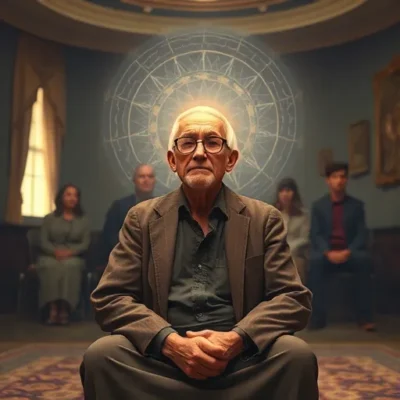
The young Cayce’s struggle to understand and accept his gifts was a defining aspect of his early life. He grappled with questions of faith, morality, and the nature of his abilities. Was this gift from God, or was it something more sinister? This internal conflict would persist for years, shaping Cayce’s approach to his work and his understanding of spirituality.
Despite his growing reputation as a healer, Cayce led a modest life, working various jobs to support his family. He was determined to use his abilities for the greater good, often giving readings for free or for minimal compensation. This selfless approach, rooted in his childhood vow to help others, would become a hallmark of Cayce’s work throughout his life.
As Cayce entered adulthood, his abilities continued to evolve and expand. What began as a means of medical diagnosis soon broadened into explorations of past lives, spiritual growth, and global events. Cayce’s readings began to touch on topics far beyond medicine, delving into areas of philosophy, spirituality, and even predictions of future events.
The young man from Kentucky, who once conversed with spirits in his family’s farm, had embarked on an extraordinary journey. Edgar Cayce’s early life and the discovery of his unique abilities set the stage for a career that would challenge conventional understanding of human potential and leave an indelible mark on the fields of spirituality, holistic health, and psychic research.
The Development and Struggles with Cayce’s Abilities
As Edgar Cayce’s psychic abilities developed, so did the internal and external challenges he faced. The transition from a young man with unusual talents to a renowned psychic and healer was fraught with personal struggles and public scrutiny. Cayce’s journey was marked by a constant battle to reconcile his extraordinary gifts with his deep-rooted Christian faith and his desire to lead a normal life.
One of the most significant challenges Cayce faced was the ethical dilemma of using his abilities for financial gain. Despite the potential for wealth and fame, Cayce remained committed to using his gift to help others, often at great personal cost. He struggled to support his family while dedicating much of his time to giving readings, many of which were offered for free or at minimal cost.
The nature of Cayce’s trance readings also posed unique challenges. While in a trance state, Cayce had no conscious awareness of the information he was providing. This led to moments of doubt and confusion when he would awaken to find he had discussed topics far beyond his waking knowledge. The disconnect between his conscious self and his trance persona was a source of ongoing internal conflict.

Cayce’s growing fame brought both opportunities and difficulties. As word of his abilities spread, he faced increasing demands for readings, which took a toll on his health and family life. He also encountered skepticism and criticism from both the scientific community and religious leaders, who questioned the source and validity of his abilities.
Despite these challenges, Cayce continued to develop and refine his psychic abilities. His readings expanded beyond medical diagnoses to include past life readings, spiritual counseling, and global predictions. This evolution of his abilities brought new dimensions to his work but also new ethical and philosophical questions to grapple with.
Throughout hislife, Cayce remained committed to using his gifts for the betterment of humanity. He established the Association for Research and Enlightenment (A.R.E.) to preserve and study his readings, ensuring that his work would continue to benefit others long after his passing. This organization continues to this day, serving as a testament to Cayce’s enduring legacy and the ongoing relevance of his teachings.
The development of Cayce’s abilities was not just a personal journey but a public one as well. As he struggled with his own doubts and fears, he also became a beacon of hope for thousands seeking healing and guidance. His ability to provide insight and comfort to those in need became a driving force in his life, helping him to overcome his own struggles and doubts.
Ultimately, Cayce’s journey with his psychic abilities was one of growth, acceptance, and service. Despite the challenges he faced, he came to see his gift as a divine calling, a responsibility to use his unique talents to help others and promote spiritual growth. His life serves as an inspiring example of how one can navigate the complexities of extraordinary abilities while maintaining a sense of humility and purpose.
Edgar Cayce’s Reading Abilities: Characteristics and Influence
Edgar Cayce’s reading abilities were truly remarkable, setting him apart from other psychics and seers of his time. The most distinctive feature of Cayce’s readings was the trance state in which they were conducted. Lying down on a couch, Cayce would enter a self-induced sleep-like state, during which he could answer questions on a wide range of topics with astonishing accuracy and detail.
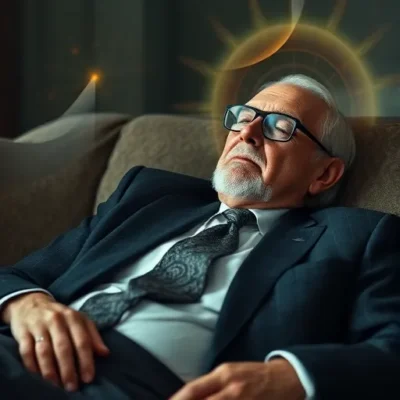
The scope of Cayce’s readings was vast and varied. While he initially focused on medical diagnoses and treatments, his readings soon expanded to cover topics such as past lives, spiritual growth, world events, ancient civilizations, and even the nature of the universe itself. This breadth of knowledge, seemingly accessed from an unknown source, baffled both skeptics and believers alike.
One of the most striking aspects of Cayce’s readings was their accuracy, particularly in the field of health and medicine. Without any formal medical training, Cayce could diagnose complex medical conditions and prescribe treatments that were often years ahead of their time. Many of his medical recommendations, such as the benefits of certain dietary practices and the importance of attitude in healing, have since been validated by modern medical research.
Cayce’s ability to provide readings for individuals who were not physically present was another remarkable aspect of his gift. Known as “absent readings,” these sessions demonstrated Cayce’s capacity to access information about a person’s health or life circumstances without any direct contact. This aspect of his work challenged conventional understanding of the limits of human perception and consciousness.
The language used in Cayce’s readings was often complex and technical, far beyond his waking vocabulary. This discrepancy between Cayce’s normal speech and the sophisticated language of his readings added to the mystery surrounding his abilities. Experts in various fields often found the information provided in these readings to be accurate and insightful, despite Cayce’s lack of formal education in these areas.
Another unique characteristic of Cayce’s readings was their holistic approach. Whether addressing health issues or life problems, Cayce’s readings often emphasized the interconnectedness of mind, body, and spirit. This holistic perspective was revolutionary for its time and has since become a cornerstone of many alternative and complementary healing practices.
Cayce’s readings also had a strong spiritual component. He often spoke of the importance of personal spiritual growth and the role of karma and reincarnation in shaping one’s life experiences. These spiritual insights provided a framework for understanding life’s challenges and opportunities, offering comfort and guidance to many who sought his help.
The influence of Cayce’s readings extended far beyond the individuals who directly received them. As word of his abilities spread, people from all walks of life, including prominent figures in politics, business, and entertainment, sought his guidance. The transcripts of his readings, meticulously recorded and preserved, became a valuable resource for researchers and spiritual seekers alike.

Cayce’s work also had a significant impact on various fields of study. His readings on ancient civilizations, particularly Atlantis and ancient Egypt, sparked renewed interest in these subjects among archaeologists and historians. His insights into human consciousness and psychic phenomena influenced the development of parapsychology and consciousness studies.
In the field of health and medicine, Cayce’s readings introduced many concepts that were ahead of their time. He spoke about the importance of diet, exercise, and mental attitude in maintaining health long before these ideas became mainstream. Many of the alternative therapies he recommended, such as massage, chiropractic care, and herbal remedies, have gained wider acceptance in recent years.
The legacy of Cayce’s readings continues to this day through the work of the Association for Research and Enlightenment (A.R.E.). This organization, founded by Cayce in 1931, preserves and studies his readings, making them available to researchers and the public. The A.R.E. also conducts ongoing research into the effectiveness of Cayce’s health recommendations and the accuracy of his predictions.
Perhaps the most profound influence of Cayce’s readings has been on individual lives. Countless people have reported life-changing experiences as a result of applying the insights and advice given in Cayce’s readings. From physical healings to spiritual awakenings, the impact of Cayce’s work on personal transformation has been significant and enduring.
In conclusion, Edgar Cayce’s reading abilities were characterized by their remarkable accuracy, breadth of knowledge, and holistic approach. The influence of his work has been far-reaching, touching fields as diverse as medicine, psychology, spirituality, and historical research. More than just a psychic phenomenon, Cayce’s readings represent a body of knowledge and wisdom that continues to inspire and guide people in their quest for health, understanding, and spiritual growth.
Accessing the Akashic Records: Cayce’s Unique Insight
One of the most intriguing aspects of Edgar Cayce’s psychic abilities was his claimed access to the Akashic Records. This concept, central to Cayce’s work, refers to a cosmic repository of all knowledge, events, thoughts, and experiences that have ever occurred or will occur in the universe. Cayce described the Akashic Records as a non-physical realm where all information about every soul and its journey is stored.
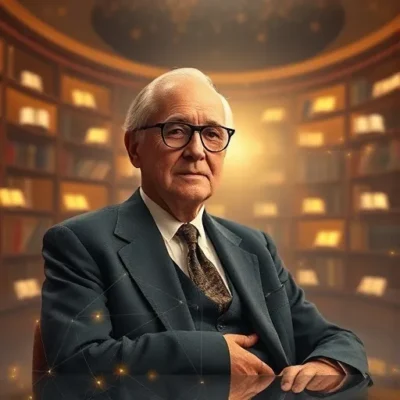
According to Cayce, the Akashic Records are not located in a physical place but exist in a dimension of consciousness accessible through heightened spiritual awareness. He likened it to a cosmic library or a universal supercomputer, containing the entire history of every soul since the dawn of creation. Cayce claimed to access these records during his trance states, drawing upon this vast reservoir of knowledge to provide insights and information in his readings.
The information Cayce retrieved from the Akashic Records covered an astonishing range of topics. It included details about past lives, future events, lost civilizations, spiritual laws, and the nature of the universe itself. This access allowed Cayce to provide remarkably detailed and often verifiable information about subjects far beyond his waking knowledge or education.
One of the most significant aspects of Cayce’s access to the Akashic Records was its role in his health readings. He could reportedly view a person’s past lives and karmic patterns, using this information to understand the root causes of current health issues or life challenges. This perspective offered a unique approach to healing, addressing not just physical symptoms but the deeper spiritual and karmic factors influencing a person’s well-being.
Cayce’s descriptions of the Akashic Records challenged conventional understanding of time and space. He suggested that past, present, and future exist simultaneously in these records, accessible to those who can attune to this level of consciousness. This concept aligns with some modern theories in quantum physics, whichpropose that time may not be as linear as we perceive it in our everyday experience.
The idea of the Akashic Records has had a profound impact on spiritual and metaphysical thought. It suggests a universe that is interconnected and intelligent, where every action and thought is recorded and has consequences. This concept has influenced many New Age philosophies and spiritual practices, encouraging individuals to consider the broader implications of their actions and the interconnectedness of all life.
While the existence of the Akashic Records cannot be scientifically proven, the accuracy and depth of information Cayce provided through his readings have led many to believe in the validity of this concept. The idea continues to fascinate researchers, spiritual seekers, and those interested in expanding human consciousness.
Cayce’s ability to access the Akashic Records remains one of the most mysterious and compelling aspects of his psychic work. It represents a bridge between the physical and spiritual realms, offering a glimpse into the vast potential of human consciousness and our connection to the universe.
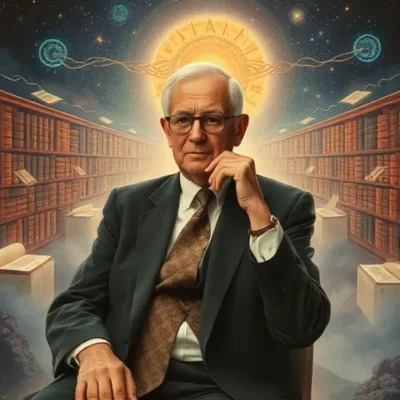
Edgar Cayce’s World War II Predictions
Among Edgar Cayce’s most notable and chilling prophecies were those related to World War II. His predictions, made years before the conflict began, demonstrated an uncanny accuracy that left many astounded and contributed significantly to his reputation as a gifted seer.
In 1935, several years before the outbreak of World War II, Cayce made a series of predictions that would prove to be remarkably prescient. He foresaw the formation of an alliance between Germany, Italy, and Japan, stating, “Germany and Italy will be allies, and will be joined by Japan.” This prediction came to fruition in September 1940 with the signing of the Tripartite Pact, forming the Axis powers.
Cayce’s visions of the war were not limited to political alliances. He also predicted the scale and devastation of the conflict. In one reading, he warned, “Forces are rising in the earth… that will bring turmoil and strife such as have not been seen since the beginning of time.” This ominous prediction accurately captured the unprecedented scale of destruction that World War II would bring.
Perhaps one of Cayce’s most chilling predictions was his foresight regarding the fate of key figures in the war. He predicted that Adolf Hitler, whom he referred to as “the madman,” would meet a tragic end. Cayce stated, “The madman will die by his own hand, in despair, in a bunker.” This prediction was eerily accurate, as Hitler did indeed commit suicide in his Berlin bunker in April 1945 as Allied forces closed in on the city.
Cayce also foresaw the downfall of Benito Mussolini, the Italian dictator. He predicted that Mussolini would be betrayed by his own people and meet a violent end. This prediction was realized in April 1945 when Mussolini was captured and executed by Italian partisans.
One of the most striking aspects of Cayce’s World War II predictions was his foresight regarding the development and use of atomic weapons. In a reading given in 1941, Cayce spoke of a “mighty force” that would be unleashed upon Japan, causing widespread destruction and long-lasting effects. He described it as “a fire that will rain from the sky,” a description that eerily matches the atomic bombings of Hiroshima and Nagasaki in August 1945.
Cayce’s predictions extended beyond the immediate events of the war to its aftermath. He foresaw the rise of the United States and the Soviet Union as global superpowers and the ensuing Cold War. In one reading, he stated, “There will be a new alignment of nations… with America and Russia as the dominant forces.” This prediction accurately captured the post-war geopolitical landscape that would shape international relations for decades to come.

The accuracy of Cayce’s World War II predictions had a profound impact on his reputation and the public’s perception of his abilities. Many who had been skeptical of his psychic claims found it difficult to dismiss these remarkably precise forecasts. The specificity and accuracy of these predictions lent credibility to Cayce’s other prophecies and teachings.
However, it’s important to note that Cayce did not view his predictions as fixed or inevitable. He often emphasized that the future is not set in stone and that human free will plays a crucial role in shaping events. Cayce saw his predictions as warnings or potential outcomes, not as immutable fate.
Cayce’s World War II predictions also carried a deeper message beyond mere forecasting. They often included spiritual insights and warnings about the consequences of human actions. He spoke of the war as a result of humanity’s collective choices and emphasized the need for spiritual growth and understanding to prevent future conflicts.
The impact of Cayce’s World War II predictions extended far beyond the war years. They contributed to a growing interest in psychic phenomena and alternative spirituality in the post-war era. Many people, seeking meaning and understanding in the aftermath of such a devastating conflict, turned to Cayce’s teachings for guidance and hope.
In retrospect, Cayce’s World War II predictions stand as some of the most compelling evidence of his extraordinary abilities. They demonstrate not only his capacity for foresight but also his deep concern for humanity’s spiritual well-being. These predictions continue to be studied and discussed, serving as a testament to Cayce’s unique gift and his enduring legacy in the field of psychic phenomena and spiritual enlightenment.
Edgar Cayce’s Predictions on Scientific and Technological Advancements
Edgar Cayce’s prophetic abilities extended far beyond world events, delving into the realm of scientific and technological advancements. His predictions in this area were often decades ahead of their time, foreseeing developments that would revolutionize various fields, from medicine to communications and energy.

One of Cayce’s most remarkable predictions was in the field of medical technology. In the 1920s, he spoke of future diagnostic tools that would use light to examine the human body. This prediction aligns closely with the development of laser technology and its applications in modern medicine. Today, lasers are used in a wide range of medical procedures, from eye surgery to cancer treatments, validating Cayce’s foresight.
Cayce also made predictions about computer technology that were strikingly accurate. He foresaw the development of devices that could process vast amounts of information and connect people across the globe. This prediction eerily describes modern computers and the internet, technologies that have fundamentally transformed society in ways Cayce could hardly have imagined in his time.
In the field of energy, Cayce predicted the growing importance of renewable energy sources. He specifically mentioned the future significance of solar energy, stating that it would become a crucial power source. This prediction has proven accurate as solar power has become increasingly important in the global shift towards sustainable energy.
Cayce’s medical predictions went beyond technology, encompassing advancements in understanding human health. He emphasized the importance of diet, exercise, and mental attitude in maintaining health, concepts that were not widely recognized in his time but have since become cornerstones of modern health practices.
Perhaps one of Cayce’s most intriguing technological predictions was his foresight into space exploration. He predicted human landings on the moon and eventual missions to Mars, visions that seemed like science fiction in his era but have since become reality or are in the process of being realized.
While many of Cayce’s scientific and technological predictions have come to pass, others remain in the realm of future possibilities. He spoke of new propulsion systems for space travel and the development oftelepathic abilities, ideas that continue to intrigue researchers and futurists.
Cayce’s predictions on scientific and technological advancements were not just about the technologies themselves, but also about their impact on society and human consciousness. He often warned about the potential misuse of technology and emphasized the need for ethical considerations in scientific progress.
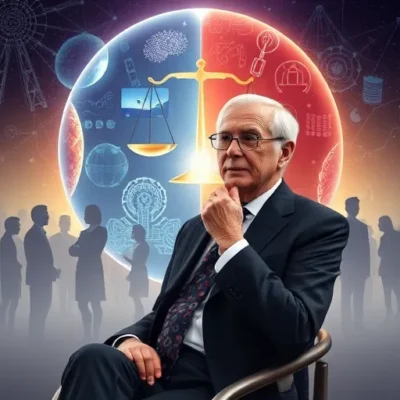
These predictions demonstrate Cayce’s remarkable ability to glimpse future developments, challenging our understanding of time and human potential. They continue to inspire scientists, inventors, and visionaries, serving as a reminder of the vast possibilities that lie ahead in human innovation and discovery.
One of Edgar Cayce’s most intriguing and controversial prophecies concerns the lost continent of Atlantis. Cayce’s readings on Atlantis captivated the imagination of many and continue to be a subject of fascination and debate among researchers and enthusiasts.
According to Cayce, Atlantis was a highly advanced civilization that existed thousands of years ago. He described it as a technologically and spiritually advanced society that possessed knowledge and capabilities far beyond our current understanding. In his readings, Cayce provided detailed information about Atlantean culture, technology, and spiritual practices.
Cayce’s Atlantis was not just a historical curiosity; he linked it directly to the present and future. He claimed that many individuals alive today are reincarnated Atlanteans, carrying with them the knowledge and karmic patterns from that ancient civilization. This concept suggests a continuity of consciousness and experience across vast spans of time, challenging our conventional understanding of history and human development.
One of the most startling aspects of Cayce’s Atlantis prophecies was his prediction of its physical resurgence. He foresaw that portions of Atlantis would begin to rise again in the late 20th or early 21st century. Specifically, he mentioned that evidence of Atlantis would be found near Bimini in the Bahamas.
In 1968, about 40 years after Cayce’s prediction, underwater structures were indeed discovered off the coast of Bimini. These structures, known as the Bimini Road or Bimini Wall, consist of a series of rectangular stones arranged in a linear formation. While the origin and nature of these structures remain a subject of scientific debate, many view them as potential evidence supporting Cayce’s prophecies.
Cayce’s Atlantis predictions are intricately linked with his visions of global earth changes. He spoke of significant geological events, including shifts in the Earth’s axis, that would lead to the reemergence of Atlantis. These predictions often coincide with his forecasts of climate change and geological upheavals.
The concept of Atlantis in Cayce’s readings goes beyond mere physical evidence. He described it as a metaphor for human potential and the cyclical nature of civilization. The rise and fall of Atlantis, according to Cayce, serve as a cautionary tale about the misuse of advanced technology and spiritual knowledge.
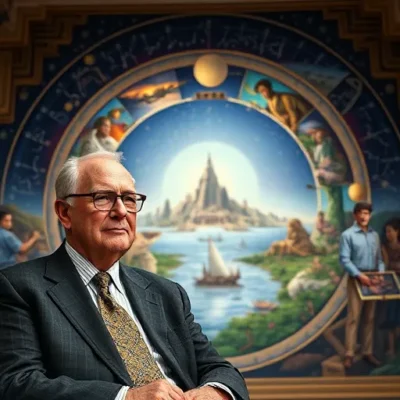
Cayce’s Atlantis prophecies also include warnings about the potential misuse of crystals and other energy sources, drawing parallels between the advanced technologies of Atlantis and our modern technological developments. He cautioned that the same mistakes that led to the downfall of Atlantis could be repeated if humanity does not learn from its past.
The revival of Atlantis, in Cayce’s vision, is not just about the physical reemergence of a lost continent. It also symbolizes a reawakening of ancient wisdom and spiritual knowledge. Cayce suggested that as Atlantis rises, so too will humanity’s consciousness evolve, potentially ushering in a new era of spiritual and technological advancement.
Critics argue that Cayce’s Atlantis prophecies are too vague or metaphorical to be considered accurate predictions. Skeptics point out that the geological evidence for a continent-sized landmass in the Atlantic Ocean is lacking. However, supporters of Cayce’s work argue that his predictions should be interpreted more symbolically, representing broader shifts in human consciousness and global patterns.
Regardless of one’s stance on the literal existence of Atlantis, Cayce’s prophecies about its revival continue to inspire research and exploration. They challenge us to consider the cyclical nature of civilization and the potential for lost knowledge to resurface and influence our future.
The Atlantis prophecies remain one of the most captivating aspects of Cayce’s work, blending elements of archaeology, geology, and spirituality. They remind us of the mysteries that still exist in our world and the potential for discoveries that could reshape our understanding of human history and potential.
Pole Shift and Global Changes: Cayce’s Earth Transformation Prophecies
Among Edgar Cayce’s most dramatic and far-reaching predictions were those concerning major earth changes, particularly the concept of a pole shift and its global consequences. These prophecies paint a picture of significant geological and climatic transformations that could reshape the face of our planet.
Cayce predicted that the Earth’s axis would shift by 16 to 20 degrees, an event known as a pole shift. This phenomenon, according to Cayce, would lead to massive changes in the Earth’s geography, climate, and even the distribution of land and sea. While the idea of a rapid and dramatic pole shift is not supported by mainstream geology, the concept has captured the imagination of many and continues to be a topic of discussion among Cayce’s followers.

The consequences of this pole shift, as described by Cayce, would be profound and far-reaching. He foresaw significant geological events, including increased volcanic activity and earthquakes. Specifically, he mentioned that two volcanoes in Italy would erupt simultaneously, causing widespread destruction. Cayce also predicted massive flooding in various parts of the world, particularly along the east and west coasts of the United States.
One of the most startling aspects of Cayce’s earth change predictions was his forecast of dramatic changes to coastlines and the submergence of certain land masses. He predicted that parts of Japan would sink into the sea and that the western portion of the United States would be inundated. Conversely, he spoke of new land rising in the Atlantic and Pacific oceans.
Cayce’s predictions also included significant climate changes. He suggested that areas currently experiencing cold climates would become warmer, while some warm areas would cool. This aligns with some modern concerns about climate change, although the mechanisms and timelines differ from current scientific projections.
Interestingly, Cayce linked these earth changes to spiritual and consciousness shifts in humanity. He viewed these physical transformations as part of a larger cycle of spiritual evolution, suggesting that as the Earth changes, so too would human consciousness evolve to a higher level.
The timeline for these events in Cayce’s readings is somewhat ambiguous, with some interpretations suggesting they would occur around the turn of the millennium. However, Cayce emphasized that the future is not set in stone and that human actions and choices could influence the outcome of these predictions.
It’s important to note that while some of Cayce’s predictions about climate change and geological instability have parallels with current environmental concerns, the scale and rapidity of the changes he described are not supported by current scientific understanding. Geologists generally agree that while the Earth’s magnetic poles do shift over time, a physical pole shift of the magnitude Cayce described is highly unlikely to occur rapidly.
Despite the lack of scientific support for a dramatic pole shift, Cayce’s earth change prophecies continue to resonate with many people. They serve as a reminder of the dynamic nature of our planet and the potential for significant environmental changes. These predictions have inspired many to take a more active interest in environmental issues and to consider the long-term consequences of human actions on the planet.

Cayce’s earth change prophecies also carry a spiritual message. He viewed these potential changes not just as physical events, but as catalysts for spiritual growth and transformation. This perspective encourages a holistic view of the relationship between humanity and the Earth, emphasizing the interconnectedness of physical and spiritual realms.
While the literal fulfillment of Cayce’s pole shift and earth change predictions remains a subject of debate, they continue to inspire reflection on our relationship with the planet and our role in shaping its future. Whether viewed as literal prophecies or metaphorical warnings, these predictions challenge us to consider our impact on the Earth and our responsibility to future generations.
Cayce’s Prophecies on Japan’s Future
Among Edgar Cayce’s many prophecies, his predictions about Japan’s future stand out as particularly striking and controversial. These prophecies have garnered significant attention, especially in Japan, due to their dramatic nature and potential implications for the island nation.
One of Cayce’s most alarming predictions concerning Japan was the possibility of large portions of the country sinking into the sea. This prediction was part of his broader visions of global earth changes and pole shifts. According to Cayce, significant geological events would lead to the submergence of much of Japan’s landmass, dramatically altering its geography and potentially threatening its very existence as a nation.
Cayce’s readings suggested that these changes would be part of a larger pattern of global transformations, including shifts in the Earth’s axis and significant climate changes. He linked these physical changes to spiritual and consciousness shifts, viewing them as part of a larger cycle of human and planetary evolution.
The timeline for these events in Cayce’s readings is somewhat ambiguous, with some interpretations suggesting they could occur around the turn of the millennium or in the early 21st century. However, it’s crucial to note that Cayce often emphasized that the future is not fixed and that human actions and choices could influence the outcome of his predictions.
These prophecies have understandably caused concern and debate in Japan. The country’s geological vulnerability, sitting on the Pacific Ring of Fire and prone to earthquakes and tsunamis, lends a degree of plausibility to fears of significant geological events. The devastating 2011 Tohoku earthquake and tsunami, which caused widespread destruction and led to the Fukushima nuclear disaster, have only heightened these concerns.

However, it’s important to approach Cayce’s predictions about Japan with a balanced perspective. While Japan does face real geological risks, the scale and rapidity of the changes Cayce described are not supported by current scientific understanding. Geologists generally agree that while sea levels are rising due to climate change, a sudden submergence of large portions of Japan is highly unlikely.
Despite the lack of scientific support for such dramatic changes, Cayce’s prophecies about Japan have inspired reflection on the country’s environmental challenges and disaster preparedness. They have encouraged discussions about sustainable development, environmental protection, and the need for robust disaster response systems.
In light of Cayce’s predictions, some have suggested that Japan should focus on:
1. Strengthening environmental protection efforts, including measures to combat climate change and preserve ecosystems.
2. Enhancing disaster preparedness and response capabilities, particularly for earthquakes, tsunamis, and other natural disasters.
3. Developing sustainable urban planning and infrastructure that can withstand potential environmental changes.
4. Investing in renewable energy and sustainable technologies to reduce environmental impact.
5. Fostering international cooperation on environmental issues and disaster response.
Cayce’s prophecies about Japan, while alarming, can be seen as a call to action rather than a fixed destiny. They remind us of the importance of environmental stewardship and the need to prepare for potential future challenges. Whether viewed as literal predictions or metaphorical warnings, these prophecies encourage a proactive approach to addressing environmental and geological risks.
Japan’s rich cultural heritage of living in harmony with nature, combined with its technological advancements, positions it uniquely to lead in areas of environmental protection and disaster preparedness. In this sense, Cayce’s prophecies could be seen as an opportunity for Japan to showcase its resilience and innovative spirit in facing potential future challenges.

Ultimately, Cayce’s predictions about Japan’s future serve as a reminder of our interconnectedness with the Earth and the importance of responsible stewardship of our planet. They challenge us to consider the long-term consequences of our actions and to work towards a more sustainable and resilient future, not just for Japan, but for the entire world.
The Impact and Accuracy of Cayce’s Prophecies
Edgar Cayce’s prophecies have left an indelible mark on the world of psychic phenomena and spiritual thought. The impact of his predictions extends far beyond his lifetime, continuing to influence and intrigue people decades after his death. The accuracy of many of his prophecies has been a subject of intense study and debate, contributing significantly to his enduring legacy.
One of the most striking aspects of Cayce’s prophecies was their remarkable accuracy in many areas. His predictions about world events, particularly those related to World War II, were often startlingly precise. He accurately foresaw the formation of the Axis powers, the timing of the war, and even specific details about its conclusion, including the fates of key figures like Hitler and Mussolini.
In the field of science and technology, many of Cayce’s predictions have come to fruition. He foresaw advancements in medical technology, such as the use of light for diagnosis and treatment, which aligns closely with modern laser technology in medicine. His predictions about computer technology and global communication networks seem to describe the internet and modern computing devices with uncanny accuracy.
Cayce’s health readings, which formed a significant portion of his work, have also been validated in many cases. His recommendations on diet, exercise, and holistic health practices were often decades ahead of their time and have since been supported by modern medical research. Many individuals reported significant improvements in their health after following Cayce’s advice, contributing to his reputation as a gifted healer.
The accuracy of Cayce’s geological predictions has been more controversial. While some of his predictions about climate change and environmental shifts align with current concerns, the dramatic earth changes he described, such as the submergence of entire landmasses, have not occurred in the timeframe or manner he suggested. However, some argue that these predictions should be interpreted more symbolically or that they may unfold over a longer period than initially thought.
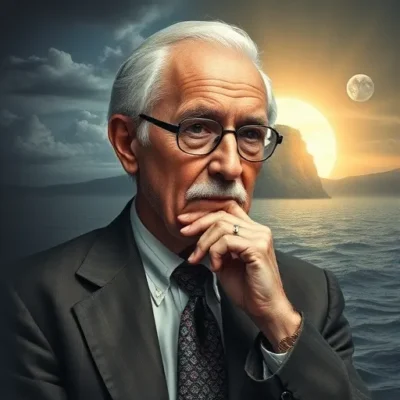
Cayce’s prophecies about ancient civilizations, particularly Atlantis, have sparked ongoing research and exploration. While definitive proof of Atlantis remains elusive, discoveries like the Bimini Road have fueled continued interest in his claims about lost civilizations.
The impact of Cayce’s prophecies extends beyond their accuracy. They have inspired countless individuals to explore spirituality, holistic health practices, and alternative perspectives on history and human potential. His work has contributed significantly to the New Age movement and has influenced fields as diverse as alternative medicine, parapsychology, and consciousness studies.
Cayce’s prophecies have also had a profound impact on how many people view the future and humanity’s role in shaping it. His emphasis on free will and personal responsibility in the face of predicted events has encouraged a more proactive approach to addressing global challenges.
However, it’s important to note that not all of Cayce’s predictions have come to pass, and some have been subject to varying interpretations. Critics argue that the language of his prophecies is often vague enough to allow for multiple interpretations, potentially leading to confirmation bias among believers.
Despite these criticisms, the overall impact of Cayce’s prophecies on spiritual and metaphysical thought cannot be overstated. His work continues to be studied, debated, and applied by individuals and organizations around the world, testament to the enduring power of his visions and insights.
The accuracy and impact of Cayce’s prophecies serve as a reminder of the mysteries that still surround human consciousness and our understanding of reality. Whether viewed as divine insight, untapped human potential, or a combination of both, Cayce’s prophetic abilities continue to challenge our perceptions and inspire exploration into the frontiers of human consciousness.
Controversies and Criticisms Surrounding Cayce’s Prophecies
While Edgar Cayce’s prophecies have garnered a significant following and influenced many, they have also been the subject of considerable controversy and criticism. The debate surrounding Cayce’s work highlights the tension between belief in psychic phenomena and scientific skepticism.

One of the primary criticisms of Cayce’s prophecies is the lack of scientific evidence to support his claims. Skeptics argue that many of his predictions are too vague or open to interpretation, allowing for post-hoc rationalizations when events seem to align with his words. They point out that the dramatic earth changes Cayce predicted, such as the submergence of entire landmasses, have not occurred in the timeframe or manner he suggested.
Critics also question the methodology used in Cayce’s readings. The trance state in which he delivered his prophecies is not a scientifically verifiable condition, and there’s no concrete evidence to support the existence of the Akashic Records from which he claimed to draw information. Skeptics argue that the information in his readings could have been influenced by his subconscious mind or cultural context rather than any psychic ability.
Another point of contention is the accuracy rate of Cayce’s predictions. While supporters often cite his high success rate, critics argue that this is often exaggerated or based on selective interpretation of his statements. They contend that failed predictions are often overlooked or reinterpreted, while hits are emphasized, leading to a skewed perception of his accuracy.
The religious and spiritual aspects of Cayce’s work have also been a source of controversy. His concepts of reincarnation and karma conflict with many traditional religious beliefs, particularly within Christianity. This has led to criticism from some religious groups who view his teachings as heretical or misleading.
Some critics have raised ethical concerns about the practice of giving medical advice while in a trance state, especially given Cayce’s lack of formal medical training. While many reported positive results from following his health recommendations, there were also cases where his advice conflicted with conventional medical wisdom.
Despite these criticisms, Cayce’s supporters argue that the overall body of his work, including the accuracy of many of his predictions and the positive impact of his health readings, cannot be easily dismissed. They contend that Cayce’s abilities challenge our current understanding of human consciousness and potential, and that his work deserves serious study rather than outright dismissal.
The controversy surrounding Cayce’s prophecies reflects broader debates about the nature of consciousness, the limits of human perception, and the relationship between science and spirituality. While skepticism is a crucial part of scientific inquiry, some argue that it should not preclude the exploration of phenomena that challenge our current understanding of reality.
Ultimately, the controversies surrounding Cayce’s prophecies serve to highlight the complex nature of his legacy. They remind us of the importance of critical thinking and the need to approach extraordinary claims with both an open mind and a healthy dose of skepticism.
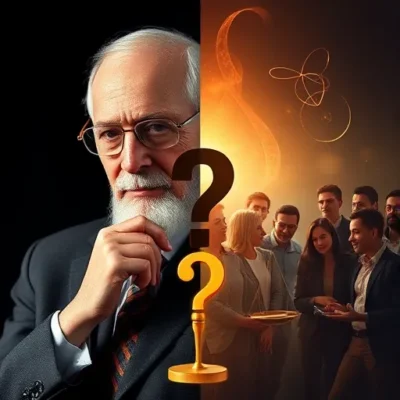
The Continuing Influence of Cayce’s Prophecies on Modern Society
Edgar Cayce’s prophecies continue to exert a significant influence on modern society, decades after his death. This enduring impact is evident in various fields, from alternative medicine and spirituality to environmental awareness and personal development.
In the realm of health and wellness, Cayce’s holistic approach has been particularly influential. His emphasis on the mind-body-spirit connection aligns closely with current trends in integrative medicine. Many of the dietary and lifestyle recommendations he made, such as the benefits of a plant-based diet and the importance of regular exercise, are now supported by modern medical research. The Association for Research and Enlightenment (A.R.E.), founded by Cayce, continues to conduct research into his health recommendations, contributing to the growing field of complementary and alternative medicine.
Cayce’s spiritual teachings have had a profound impact on New Age philosophy and contemporary spirituality. His concepts of reincarnation, karma, and the Akashic Records have become integral parts of many modern spiritual belief systems. The idea that each individual is on a spiritual journey of growth and evolution resonates with many seeking meaning and purpose in their lives.
Environmental awareness is another area where Cayce’s influence is felt. His predictions about climate change and environmental upheaval, while often interpreted metaphorically, have contributed to a growing consciousness about humanity’s impact on the planet. Many of his followers advocate for environmental stewardship and sustainable living practices, inspired by his warnings about the consequences of neglecting our relationship with the Earth.
In the field of parapsychology and consciousness studies, Cayce’s work continues to be a subject of interest and research. His demonstrations of extrasensory perception and his accounts of accessing information beyond his conscious knowledge challenge conventional understanding of human consciousness. This has inspired ongoing research into phenomena such as remote viewing and intuitive healing.
Cayce’s prophecies about ancient civilizations, particularly Atlantis, have spurred continued interest and research in alternative archaeology. While mainstream archaeology does not support many of his claims, his visions have inspired explorers and researchers to look at ancient history from new perspectives.
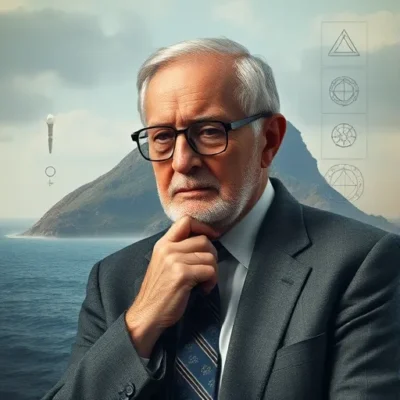
The concept of personal psychic development, which Cayce emphasized, has gained popularity in recent decades. Many people are exploring techniques like meditation and intuitive development, inspired by Cayce’s example of accessing higher states of consciousness.
Cayce’s work has also influenced approaches to education and child development. His readings often emphasized the importance of nurturing individual talents and learning styles, concepts that are now gaining traction in progressive educational theories.
In the business world, some of Cayce’s principles about ethical leadership and the importance of serving others have found their way into corporate philosophies and social entrepreneurship models.
The digital age has given Cayce’s work new life, with online communities and forums dedicated to discussing and interpreting his prophecies. This has allowed for a global exchange of ideas and interpretations of his work, keeping his legacy alive and evolving.
Cayce’s emphasis on the power of thoughts and attitudes in shaping one’s life aligns with modern concepts of positive psychology and the law of attraction. Many self-help and personal development programs draw inspiration from his teachings.
While controversial, Cayce’s prophecies about earth changes and global transformations continue to influence discussions about climate change, disaster preparedness, and global sustainability.
The enduring influence of Cayce’s work is a testament to its depth and relevance. Whether viewed as prophetic insight or as a catalyst for exploring human potential, Cayce’s legacy continues to inspire, challenge, and shape modern thought in numerous ways.
Conclusion: The Enduring Legacy of Edgar Cayce’s Teachings
As we reflect on the life, work, and prophecies of Edgar Cayce, we are confronted with a legacy that continues to challenge, inspire, and provoke thought long after his passing. Cayce’s teachings and predictions offer a unique lens through which to view human potential, spirituality, and our relationship with the world around us.

At the heart of Cayce’s legacy is the idea that each individual possesses untapped potential for growth, healing, and spiritual evolution. His work suggests that we are more than our physical bodies and conscious minds – that we are spiritual beings on a journey of discovery and development. This perspective has offered hope and purpose to countless individuals seeking meaning in their lives.
Cayce’s holistic approach to health and wellness, emphasizing the interconnectedness of mind, body, and spirit, was ahead of its time and continues to influence alternative and complementary medicine. His dietary recommendations, stress on the importance of attitude in healing, and advocacy for natural remedies align with many current trends in health and wellness.
The prophetic aspects of Cayce’s work, while controversial, have kept his legacy alive and relevant. His predictions about world events, technological advancements, and earth changes continue to be studied and debated. Whether viewed as accurate forecasts or metaphorical warnings, these prophecies encourage us to consider our role in shaping the future and our responsibility to the planet and each other.
Cayce’s concept of the Akashic Records and his descriptions of past lives have expanded our understanding of consciousness and the nature of reality. While these ideas challenge conventional scientific thinking, they have inspired research into the frontiers of human consciousness and the potential for accessing information beyond our immediate senses.
Perhaps one of the most significant aspects of Cayce’s legacy is his emphasis on personal responsibility and the power of individual choice. Even in his most dire predictions, Cayce maintained that the future is not set in stone and that human actions and attitudes can shape outcomes. This empowering message encourages proactive engagement with the challenges facing our world.
Cayce’s work has also contributed significantly to the dialogue between science and spirituality. While his claims often fall outside the realm of scientific verification, they challenge us to consider the limitations of our current understanding and the potential for expanding our knowledge of reality.
The enduring popularity of Cayce’s teachings speaks to a deep human desire for understanding our place in the universe and our potential for growth and transformation. His work continues to offer comfort, inspiration, and guidance to those seeking answers to life’s big questions.

However, it’s important to approach Cayce’s legacy with a balanced perspective. While his insights and predictions have proven remarkably accurate in many cases, they are not infallible. Critical thinking and discernment are essential when engaging with his work, as with any spiritual or metaphysical teachings.
As we move forward into an increasingly complex and challenging world, Cayce’s teachings remind us of the importance of compassion, personal growth, and our interconnectedness with all life. They encourage us to look beyond the surface of things, to consider the spiritual dimensions of our existence, and to take responsibility for our personal and collective future.
In conclusion, Edgar Cayce’s legacy is a testament to the enduring human quest for knowledge, meaning, and spiritual understanding. His life and work continue to inspire us to explore the depths of human potential, to seek harmony between body, mind, and spirit, and to work towards a more enlightened and compassionate world. Whether one views Cayce as a prophet, a healer, or simply a remarkable individual, his contributions to our understanding of human consciousness and potential remain profound and worthy of continued exploration.



Comments